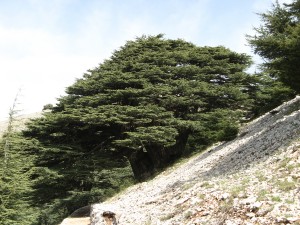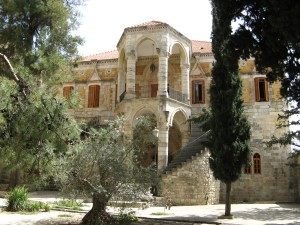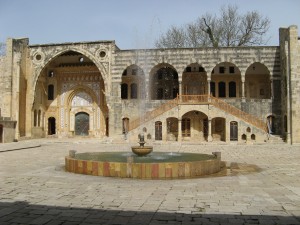I arranged a car and driver for a trip from Beirut up into the Chouf mountains. The road from the coast quickly entered low, but steep, mountains, heavily wooded and very green. Higher up, the hills became more mixed, sometime still green and wooded, sometimes rocky and barren.
At the Chouf Cedar Reserve at Maaser ech-Chouf, I spent 40 minutes wandering through an old Lebanese Cedar forest. The overall reserve is apparently quite large, but this particular section is quite small, although it contains quite a number of large old trees. The largest single trunks seemed to be around 3ft diameter. The largest “trunks” seemed to be aggregates of multiple trees grown together. Some of these were 6ft or more across. A park sign claimed that one such aggregate was 3000 years old, but I’m afraid I’m a little dubious.
The young trees are straight and tall and thin, like firs. The older trees develop the horizontal growth in elegant stratified green layers that is so distinctive. Walking through the forest was very peaceful and calm, especially after the noise and bustle of Beirut.
Moukhtara is the home of the Jumblatt family and thus the unofficial capital of the Druze and the Chouf. I had been planning to stop near the Jumblatt family palace and maybe take a few discreet photos from the roadside. But no. My driver took me up to the front security gate and indicated I should go ahead. Um, OK. The security staff were in civilian clothes and while they weren’t overtly waving any big weapons around, they were also distinctly watchful. However they seemed reasonably amiable towards a random wandering Scotsman. After the main gate, I had my bag taken to be searched and it was then indicated I should continue without it. I retrieved my camera and was given a slightly reluctant nod. It was indicated I should turn it on. Having my lens open out got an approving nod. Then one gentleman was delegated to take me up to the main house. I got as far as the main outer courtyard, with a good view of the quite majestic grand manor building. It seemed very pleasant, with grand sweeping exterior staircases and a fine view of the Chouf. It was actually unclear how much further I was allowed or expected to go, but I decided that I should consider myself fortunate to take some pictures here and not push my luck. So after only a couple of minutes, I trotted out again.
The Beiteddine Palace was the large, sprawling, graceful palace of a semi-independent regional governor. It was built around 1800, mostly in a classical Arab style, but also using some modern elements. There are three courtyards, ranging from one very large and very public to a semi-private small inner court with a charming fountain, to the (unfortunately closed) private inner court. [Or so says Lonely Planet. There is also a common Syrian pattern where the middle court is for family and the rear court is for servants, which actually seems to fit the layout better.] There are large stables in arched stone galleries beneath the last two. The palace is well worth visiting for itself, but the advertised highlight is the collection of 5th to 6th c AD mosaics in the stables. Although the collection is large, the quality is generally much lower than at Antakya. There are some good geometric pieces, many weaker animals ones, and only a few humans. There is no real attempt at the full painting style seen at Antakya.
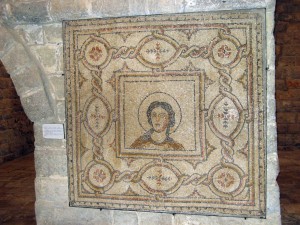 |
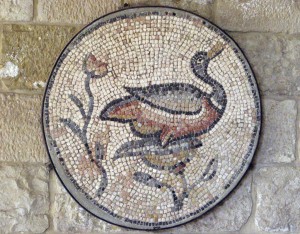 |
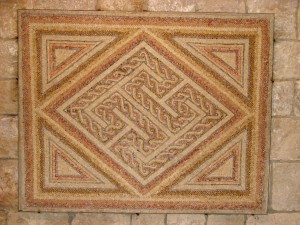 |
